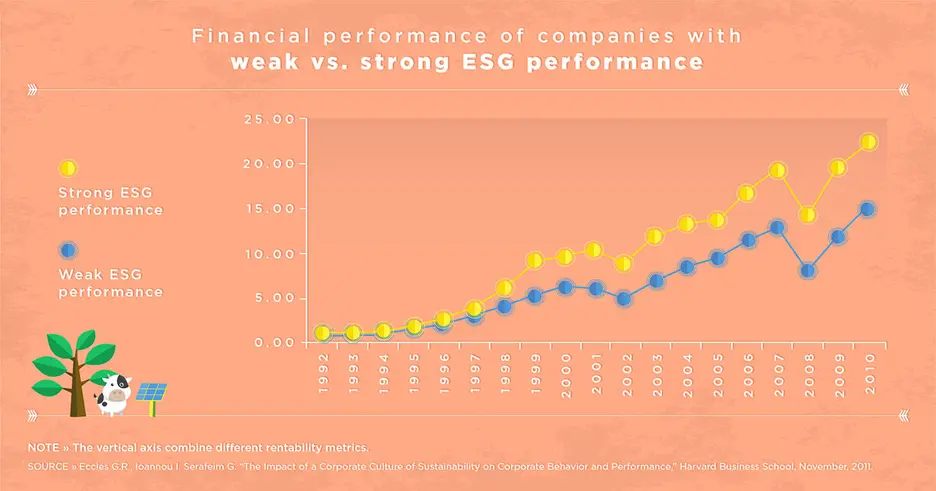Sustainability boosts agribusinesses

A trilogy with impact
The objective is not to provide an in-depth view of the economic, environmental, and social aspects of the concept and philosophy of sustainability but rather to emphasize the positive impact on companies’ financial returns when sustainability becomes a strategic pillar.
A Harvard University study on a total of 90 public companies in the world and in more than 30 sectors shows an incremental benefit obtained by those companies that have high standards of sustainability versus another group that assigned comparatively less importance to sustainability. Although the study was done in 2012, this trend continues to grow.

On the other hand, although multinationals with high sustainability standards are subject to quality problems involving their products or processes (as happened with the scandals related to salmonella, infant formula in dairy products, horsemeat, or child labor), for smaller companies an impact of this kind could knock them out of the market. Good environmental and social management of operations is insurance for better quality.
Companies cannot underestimate the negative consequences that oversights in crucial aspects can have on their business. In Peru, for example, the thriving intensive farming sector places particular emphasis on sustainable water management in productive areas where aquifer recharge is nearly zero, in various strategies for adapting to the potential impacts of climate change and in policies for retaining staff, particularly women. In countries with lax tax structures, companies with opaque transfer price schemes may suffer tax contingencies (fines) that impact their earnings and access to financing. Companies that process soy or palm oil must ensure that the supply chain that guarantees the product is not sourced from deforested areas.
Global agricultural exporters are investing to preserve land and water resources with new technologies that secure production systems that comply with the quality and sustainability standards required by the market and thus consolidate the competitiveness of their businesses over the long term.
The success of Hamdi Ulukaya, founder and CEO of Chobani, a yogurt producer in the United States, shows how his vision of incorporating refugees as employees, paying them better than the competition and allowing them to participate in profits, results in low employee turnover, greater labor efficiency, and increased market share. Chobani combines the compensation scheme of the Ford Company’s early days with the participatory model of Silicon Valley.
Connection with the financial world
Sustainability criteria are also making headway among the various players in the financial system. An example of this trend was the gradual departure of institutional investors from industries considered “dirty,” particularly in energy. In recent years, more than 400 institutional investors and 2,000 private investors divested themselves of assets of this kind amounting to $2 billion, according to the publication Investing for a Sustainable Future, from MIT and the Boston Consulting Group.
Generation Investments, a fund created in 2004 by Al Gore (Nobel Peace Prize recipient in 2007, based on his contributions regarding climate change), invests in companies with high sustainability criteria. It was they who divested themselves of shares in an oil company, years before one of the worst spills in history that cost the company and investors more than $50 billion. Generation’s returns over the last three years were 15% per year and its returns from 2004 to 2010 were 13.5% per year (compared to 8.5% and 7% for the MSCI World Index).
Challenges
But sustainability as a concept also poses the challenge of achieving business models that last over time. This is to avoid errors in strategic vision, like that of a powerful American industrialist, who in the early 20th century when faced with the advance of the automotive and aviation industry, failed to perceive that his business was transportation and not just railroads. And in these times, this is how Amazon managed to increase its market capitalization from $2 billion in 1998 to $30 billion in 2008. This figure already exceeds $780 billion in 2018, greater than the total gross domestic product (GDP) of Colombia, Peru, Uruguay, Costa Rica, and Guatemala.
While some are sleeping, others are not.
LIKE WHAT YOU JUST READ?
Subscribe to our mailing list to stay informed on the latest IDB Invest news, blog posts, upcoming events, and to learn more about specific areas of interest.
Subscribe



